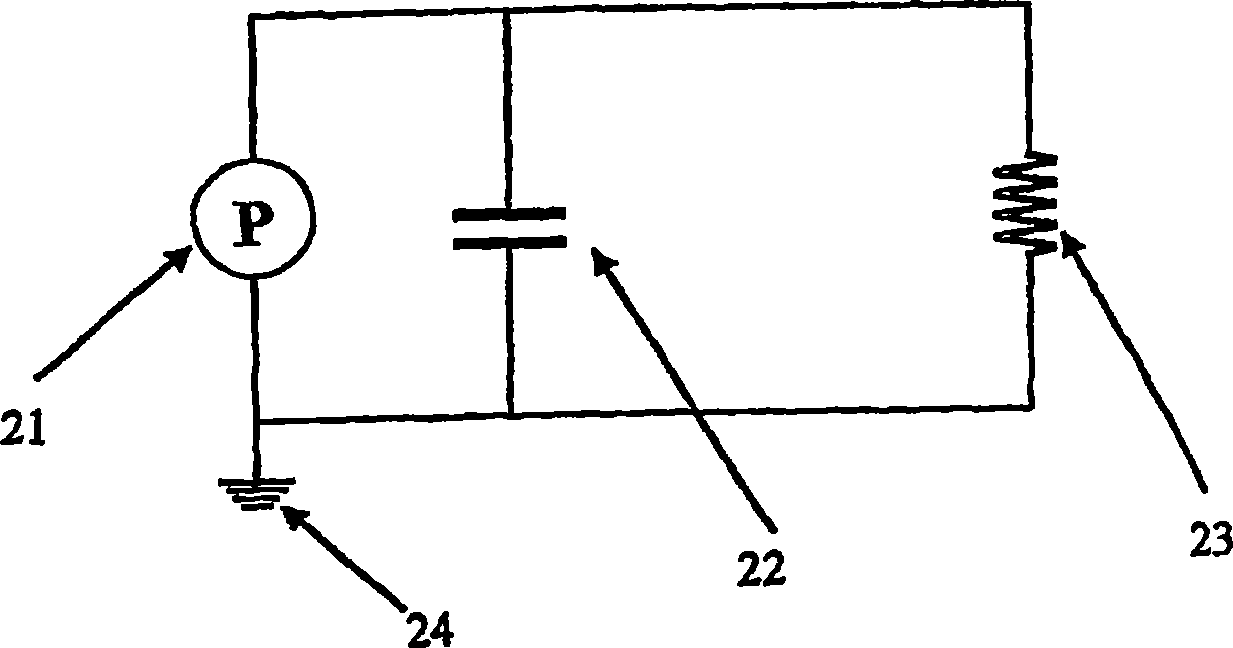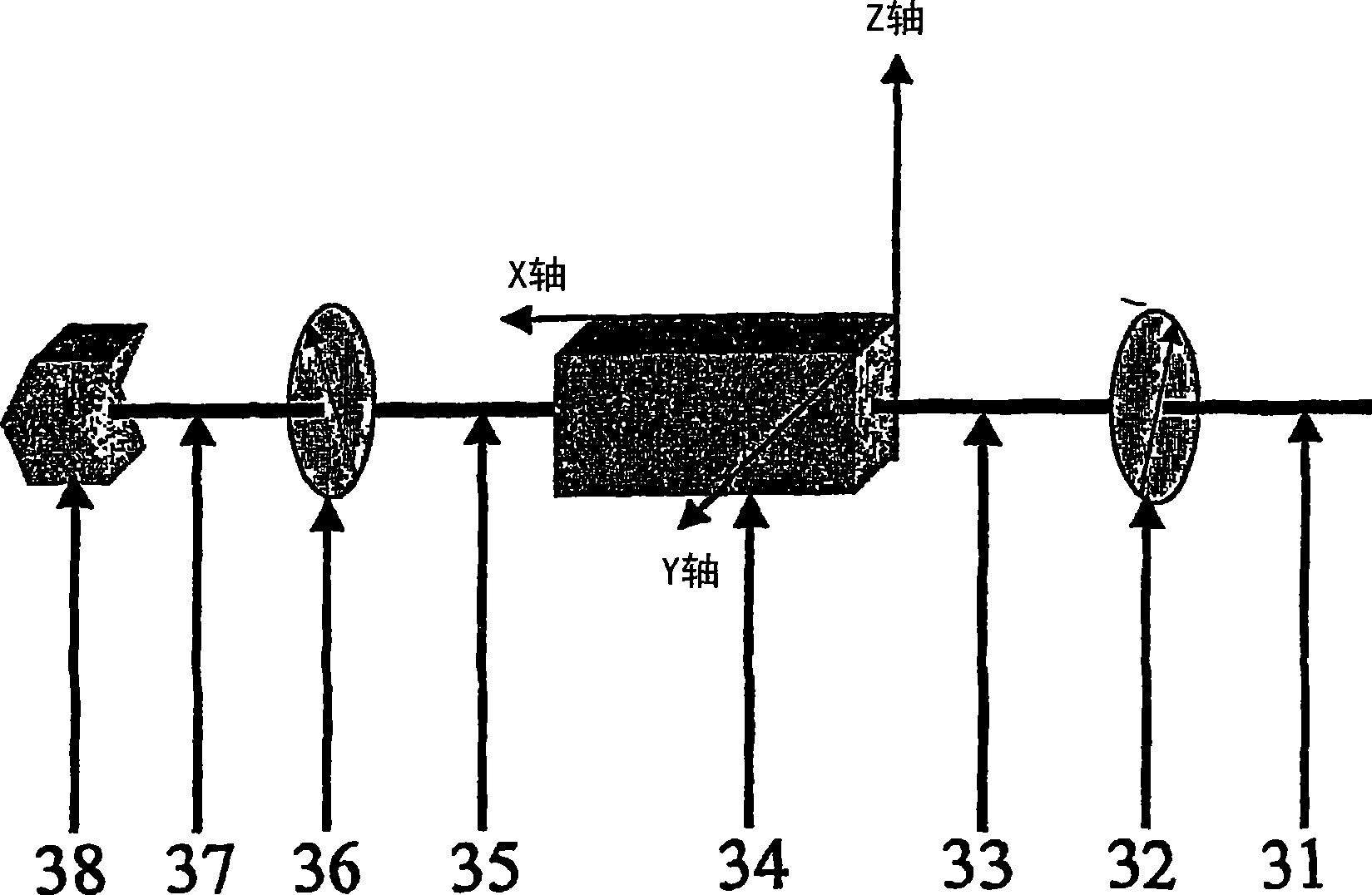Thermal imaging system and method
A thermal imaging and thermal detection technology, applied in the field of remote detection, can solve the problems of sampling time limitation, loss of IR radiation, etc.
- Summary
- Abstract
- Description
- Claims
- Application Information
AI Technical Summary
Problems solved by technology
Method used
Image
Examples
Embodiment 1
[0050] Example 1 utilizes a crossed polarizer structure for a single detector consisting of a paraelectric material as the EO component. Several paraelectric EO materials exist, such as LiTaO 3 、KTaO 3 、KTa 1-y Nby o 3 (known as KTN), K 1-x Li x Ta 1-y Nb y o 3 (KLTN), K 1-x Na x Ta 1-y Nb y o 3 (KNTN), this list is not exhaustive.
[0051] Paraelectric materials are defined by the lack of spontaneous electrical polarization. Since the EO effect involves electrical polarization, it was concluded that any change in the refractive index caused by the EO effect would be a function of the applied electric field multiplied by the dielectric constant of the material. In the following mathematical analysis, we will restrict ourselves to the case where the paraelectric material is also centrosymmetric, in which case the EO effect is quadratic with respect to the applied electric field. It should be noted, however, that similar formulas can be derived for linear EO, as...
Embodiment 2
[0071] Embodiment 2 is basically the same as Embodiment 1, with the addition of an additional dummy, which is arranged in parallel with the detector ("parallel dummy"). The role of the parallel dummy is to extract the reference readout signal, which will then be used to nullify any effects not related to the temperature increase caused by the IR radiation. In a preferred embodiment, the parallel dummy is identical to the detector in all parameters, except for the IR absorbing layer. Place parallel dummy's close to the detectors so they are all supported by the same temperature controller.
[0072] Figure 5 The operation mode of Embodiment 2 is schematically shown. Laser beam 51 is split into two beams 52 and 53 of equal intensity using a beam splitter (not shown). Alternatively, we can use two different laser beams, preferably of the same intensity and with the same polarization state. However, using two different lasers may increase noise because their fluctuations (fluc...
Embodiment 3
[0077] Embodiment 3 is another example for a single detector, this time utilizing the MZI structure. A schematic diagram of this structure is in Figure 6 given in. The laser beam 61 is split into two beams of equal intensity, a read beam 62 passing through a detector 64 and a reference beam 63 passing through a parallel dummy 65 . A phase matching device 66 is added to one of these two paths. exist Figure 6 In the case shown, a device 66 is added in the path of the reference beam 63 without loss of generality. As explained above in Example 1, device 66 may be passive (ie, have a fixed characteristic), or active (ie, be constructed of EO material whose degree of birefringence is controlled by an electric field). The beams are then combined together on a power meter 67 for interference. In the absence of IR radiation, the phases of the two beams should be the same (since they travel the same optical length), and thus should form constructive interference. The phase match...
PUM
| Property | Measurement | Unit |
|---|---|---|
| wavelength | aaaaa | aaaaa |
Abstract
Description
Claims
Application Information
 Login to View More
Login to View More - R&D
- Intellectual Property
- Life Sciences
- Materials
- Tech Scout
- Unparalleled Data Quality
- Higher Quality Content
- 60% Fewer Hallucinations
Browse by: Latest US Patents, China's latest patents, Technical Efficacy Thesaurus, Application Domain, Technology Topic, Popular Technical Reports.
© 2025 PatSnap. All rights reserved.Legal|Privacy policy|Modern Slavery Act Transparency Statement|Sitemap|About US| Contact US: help@patsnap.com



